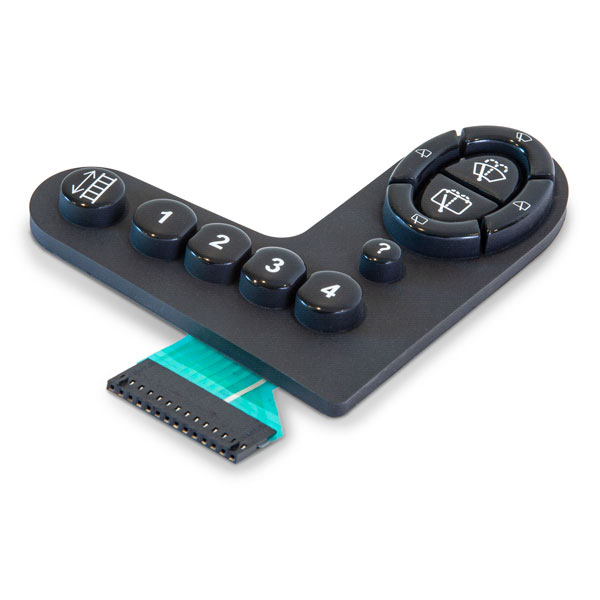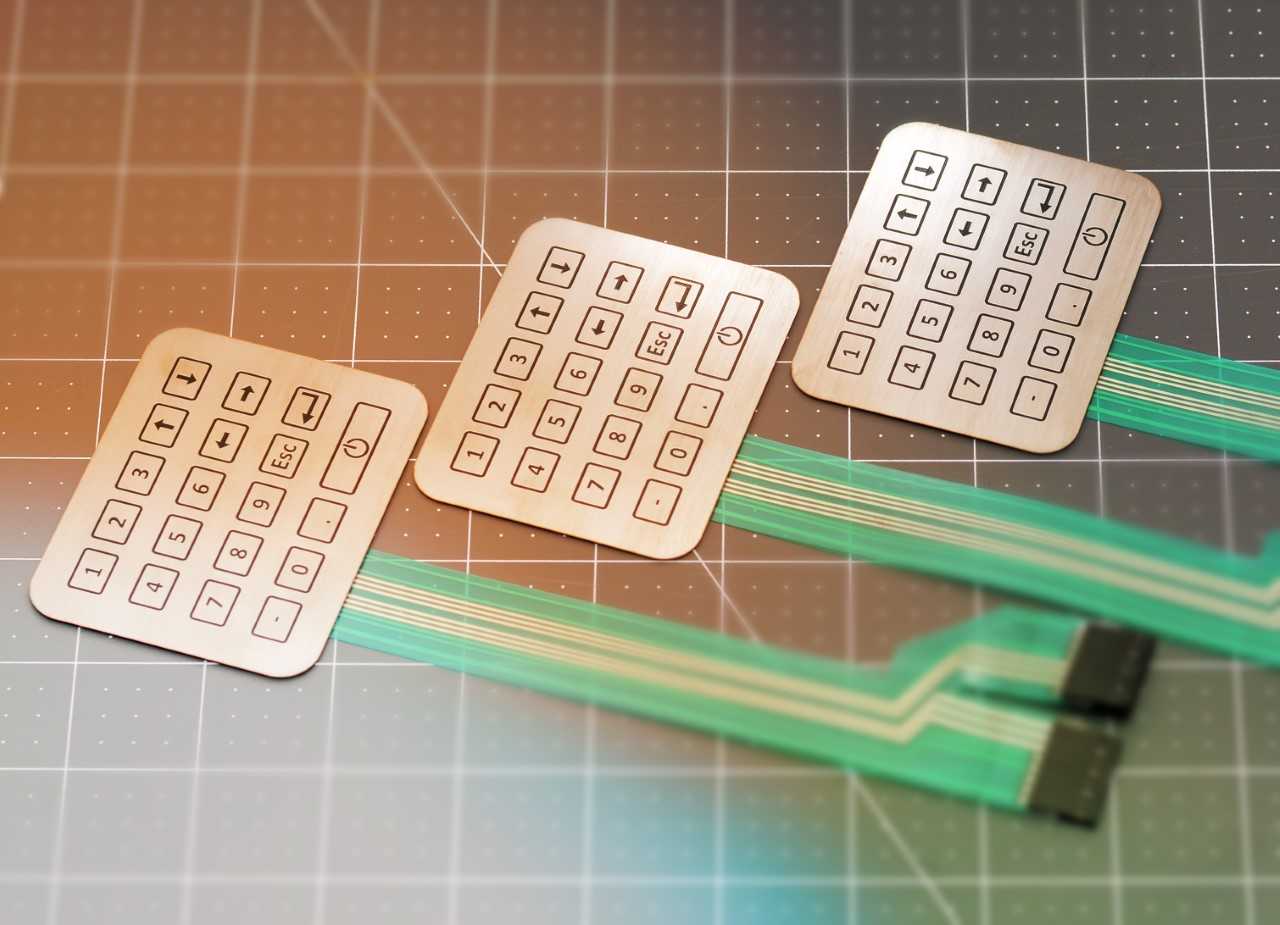How Membrane Switch Technology is Revolutionizing User Interfaces
How Membrane Switch Technology is Revolutionizing User Interfaces
Blog Article
Recognizing Membrane Layer Switches: The Trick to Dependable and resilient Controls

What Are Membrane Layer Buttons?
Membrane switches are an advanced service in the world of customer interface innovation, integrating performance and design flawlessly. These devices function as an interface between individuals and electronic systems, integrating numerous components right into a small layout. Generally created from adaptable, thin layers of products, membrane buttons are made to react to touch, allowing customers to communicate with equipment and digital tools efficiently.
The key elements of a membrane switch consist of a published circuit layer, graphic overlay, and a spacer layer that stops unintended activation. The visuals overlay can be customized to reflect brand name identification or user preferences, enhancing visual appeals while making certain use. Membrane buttons are generally utilized in different applications, including medical gadgets, customer electronics, and commercial devices, owing to their resilience and resistance to ecological variables such as moisture and dust.
Among the vital benefits of membrane buttons is their ability to withstand wear and tear, making them perfect for high-traffic atmospheres. In addition, they are light-weight and require minimal area, enabling ingenious designs in item growth. Overall, membrane switches represent a practical and reliable choice for modern-day digital interfaces, marrying innovation with user-centric design concepts.
Just How Membrane Layer Switches Work
The procedure of membrane changes hinges on a straightforward yet reliable device that converts individual input right into digital signals. When an individual presses the switch, the leading layer deforms, allowing a conductive component in the circuit layer to make contact with a corresponding conductive pad on the underside of the visuals overlay.
The style of membrane switches can vary, but they often include domes or responsive components to provide comments to the user, enhancing the overall experience - membrane switch. The materials made use of in membrane switches, such as polyester or polycarbonate, add to their resilience and resistance to ecological variables, consisting of moisture and dirt. Moreover, the printed circuits are commonly enveloped, which shields them from deterioration in time.
Benefits of Membrane Layer Buttons

In addition, membrane layer buttons are known for their durability. Constructed from robust materials, they are resistant to dirt, wetness, and physical wear, which considerably extends their lifespan contrasted to conventional mechanical buttons. This click site resilience makes them particularly suitable for high-traffic atmospheres and applications calling for longevity.
One more significant benefit is the convenience of cleansing and maintenance. The smooth surface of membrane layer switches over minimizes dust accumulation and is often unsusceptible spills, making them optimal for setups that need regular sanitization.
Furthermore, membrane layer buttons offer a streamlined account, leading to a thinner layout that can be incorporated into numerous gadgets without adding bulk. This attribute not only improves the aesthetic charm but also adds to a much more ergonomic product design.
Applications of Membrane Layer Switches
Versatile and user-friendly, membrane switches find applications throughout a broad variety of industries, consisting of clinical tools, consumer electronics, and commercial devices. In the medical area, these switches are important to gadgets such as diagnostic equipment, patient monitoring systems, and mixture pumps, where integrity and ease of cleansing are critical. Their capacity to maintain and hold up against rough settings functionality makes them ideal for such applications.

In consumer electronics, membrane layer switches are used in items like microwaves, cleaning equipments, and remotes - membrane switch. Their smooth design enables user-friendly individual interfaces, enhancing the general individual experience while giving resilience and resistance to damage
Commercial equipment also takes advantage of membrane layer buttons, particularly in control panels for machinery and automation systems. These switches offer protection against dust and dampness, ensuring regular performance in challenging settings. Furthermore, their personalized functions allow makers to customize them to certain functional needs, boosting effectiveness and capability.
Selecting the Right Membrane Layer Change
When selecting a membrane layer switch, it is vital to take into consideration various aspects that influence efficiency and suitability for details applications. The main factors to consider consist of ecological conditions, tactile responses, longevity, and design specs.
First, analyze the operating setting; buttons revealed to moisture, chemicals, or extreme temperature levels require specific materials to ensure longevity and performance. Next, evaluate the demand for responsive comments. Relying on user communication, some applications might take advantage of a responsive feedback to verify activation, while others may prefer a non-tactile design for aesthetic factors.
Sturdiness is one more critical element; membrane switches ought to be created to stand up to regular usage, impacts, and abrasion. Make sure the picked switch can sustain the expected lifecycle, specifically in high-usage situations.

Conclusion
In final thought, membrane switches over work as crucial components in the style of reliable and durable control systems throughout various markets. Their compact style, combined with robust building and personalized features, boosts user interaction while guaranteeing long life in requiring settings. The convenience of membrane layer see this here switches enables customized solutions that meet details functional demands, strengthening their significance in contemporary innovation. As sectors remain to develop, the significance of integrating effective membrane layer switch services can not be overstated.
Membrane switches represent a vital element of modern user interface design, mixing functionality with resilience in different applications.Membrane layer buttons are a sophisticated option in the realm of customer interface technology, incorporating functionality and design flawlessly. Generally constructed from flexible, thin layers of products, membrane layer switches are designed to respond to touch, allowing individuals to communicate with equipment and electronic tools properly.
The design of membrane layer switches can vary, yet they usually integrate domes or responsive components to supply responses to the user, boosting the overall experience.In conclusion, membrane switches offer as essential components in the layout of trusted and durable control systems throughout numerous sectors.
Report this page